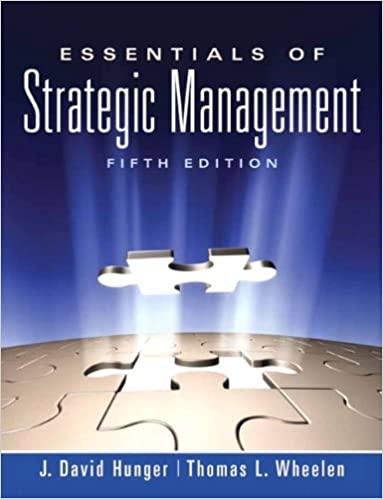Question
Creating Content Making any assessment of the impact of digital technology is difficult. As a simple thought exercise to understand the difficulty, think about how
Creating Content
Making any assessment of the impact of digital technology is difficult. As a simple "thought exercise" to understand the difficulty, think about how much we know about the internal combustion engine or electricity. Now, think about how much those technologies transformed (and continue to guide) every aspect of our daily life, from where we live to when we wake up and go to sleep to how we spend our leisure time. Compare that with how little we know about the long-term impact of digital technologies in shaping how we work and live. Simply put, the long-term effects of technologies are difficult to determine while we are in the midst of their emergence.
In spite of this difficulty, we need to be able to intelligently discuss the potential effects of new technologies.
With this in mind, this week I am going to ask that you select one topic related to digital technology and think about how you have experienced it. The goal is to understand what we already know about the consequences of its use as well as its potential effects in the future. We will narrow our list of topics to those that, in some way, involve the implementation of algorithms that "learn" or are "trained" from previous data. Thus, please select a topic that you are interested in for some short exploration and research. I encourage you to select one that is related to the industry in which you are currently employed or one where you hope to be employed, or an industry in which you are otherwise interested in. This will make the knowledge you develop especially relevant.
Some potential examples include:
- Dynamic scheduling, that is, algorithms that continually update the scheduled work of individuals such as delivery drivers, repair personnel, or salespeople but also of people in hourly jobs in retail establishments;
- Crowdsourcing, that is, algorithms that make it possible for normally unrelated people to collaborate towards a joint outcome;
- Facial recognition, that is, algorithms that can recognize and "certify" individuals in a broad range of security or verification environments;
- Chatbots, that is, algorithms that "converse" with customers to deliver help for products or services;
- Targeted advertisements, that is, algorithms that use demographic information as well as previous shopping (or consumption) data to offer products or services;
- Assessment tools, that is, algorithms that use demographic information and other history to evaluate some aspect of a transaction, such as approval of a loan or setting a mortgage rate for a particular customer;
- Artificial Intelligence (AI) diagnostics in medicine, that is, algorithms that use previous diagnosis data or population level statistics to diagnose illnesses and offer treatment at the individual level.
Questions
There are a number of directions you can go in exploring one of these technologies. For your post, explain the setting and the technology, and choose two of the following questions:
- What technology does it replace or enhance? How does it replace or enhance it?
- What stage of development do you judge this type or class of algorithm to be in? In other words, how advanced is it, especially compared to the technology that it is intended to replace?
- What are the benefits of the adoption of this algorithm?
- How are the people that used to do the work "the old way" affected by its implementation?
- How are the people that used to receive the service of the algorithm "the old way" affected?
- Who derives benefits from the use of the algorithm? Are those benefits likely to persist or erode over time? Why?
- Are the costs or downsides of the adoption of this algorithm? What are the objections to its use? Can the problems be addressed in such a way that those objections decrease over time? How?
Submission Instructions
After completing your research, please post a paragraph on what you have found in this Canvas discussion, where we will all be able to read it.
Step by Step Solution
There are 3 Steps involved in it
Step: 1

Get Instant Access to Expert-Tailored Solutions
See step-by-step solutions with expert insights and AI powered tools for academic success
Step: 2

Step: 3

Ace Your Homework with AI
Get the answers you need in no time with our AI-driven, step-by-step assistance
Get Started


